 Before you start reading this review, let’s get a few things straight.
Before you start reading this review, let’s get a few things straight.
If you’re looking for an auto everything camera with a zillion hand-holding scene modes, big pretty icons and more wizards than a cauldron convention, this isn’t the camera for you.
If you’re after a camera with a ginormous zoom able to sweep in and capture the delicate fluttering of a wasp’s wings from 300 yards, move on.
 And if you like your cameras to look mean’n’lean with big shiny lenses, all-swivellin’, flip-out LCD screens with hi-tech add-ons like optical image stabilisation and bleeping bells’n’whistles, walk on by.
And if you like your cameras to look mean’n’lean with big shiny lenses, all-swivellin’, flip-out LCD screens with hi-tech add-ons like optical image stabilisation and bleeping bells’n’whistles, walk on by.
You want to zoom in to a scene? Well, get walking because there’s no zoom at all, only a fixed wideangle lens.
Need to take a picture in a complex lighting situation? Then come back when you’ve learnt some photography basics because there’s no dial-full of scene modes to fall back on.
Less is more
Unlike any other digital compact we can think of, the Ricoh GR Digital is an 8 megapixel digital camera that seems to be unique in selling itself on having less whiz-bang features than its competitors.
 Although this approach may not appeal to the point’n’shoot brigade, for enthusiasts fed up with the endless button pushing and dial spinning that comes with most compact digicams, this camera is a revelation.
Although this approach may not appeal to the point’n’shoot brigade, for enthusiasts fed up with the endless button pushing and dial spinning that comes with most compact digicams, this camera is a revelation.
Based on the legendary Ricoh GR1 35mm film camera, the GR is a no-holds barred landscape/street photographer’s dream offering a fast 28mm f2.4 lens, beautiful handling and dedicated manual controls giving full control over exposure.
An optional wide angle adapter provides an incredible, super-wide 21mm (film equiv) view – perfect for landscape/architectural photographers – although the removable lens mount ring looks a prime candidate to be promptly lost.
 Sadly, there’s no built in optical viewfinder, although the big 2.5″ LCD 210k pixel screen performed well in bright light and can also display a live histogram display.
Sadly, there’s no built in optical viewfinder, although the big 2.5″ LCD 210k pixel screen performed well in bright light and can also display a live histogram display.
Pro users (with deep pockets) may be tempted to shell out for the optional Optical Viewfinder – this clips onto the hotshoe socket and offered the brightest view we’ve ever seen on a compact digicam.
Handling
Despite its non-bling, ultra-basic looks (one person mistook the £400 camera for a disposable!) when you pick up the Ricoh you can instantly feel the class – it’s tough, feels great, it’s just the right size in the hands with all the controls exactly where you want them to be.
 The camera is one of the smallest digital cameras with ultra-wide angle lens, and fits easily in a pocket, measuring 107 x 25 x 58 mm (WxDxH).
The camera is one of the smallest digital cameras with ultra-wide angle lens, and fits easily in a pocket, measuring 107 x 25 x 58 mm (WxDxH).
Ricoh’s menu system proved very intuitive, with clearly labelled tabs guiding users through the various options available and the paper manual was one of the better ones we’ve read – and thankfully didn’t come in five hundred obscure languages.
The camera takes a proprietary lithium-ion rechargable battery which gave a reasonable battery life of around 230 shots, while Ricoh usefully include the option to use 2 AAA batteries in an emergency.
Although these are likely to pack in after only 25 shots or so, they could be a life saver when batteries fail unexpectedly.
Exposure and shooting options
Although there is one ‘Auto’ mode, to appreciate this camera you’ve got to switch to the advanced modes: Program Shift, Aperture Priority and Manual (there is a scene mode, but this only has a voice recording option and a setting for capturing text).
In Aperture Priority, turning the dial at the front of the camera directly changes aperture values, with the updated shutter speed appearing in the 2.5″ LCD screen.
In Manual mode, traditional photographers may feel a nostalgic tear welling up in their eyes as they see the welcome reappearance of a time-honoured -2 EV to +2EV needle displaying the exposure status.
In any shooting mode, important values like ISO rating, focus, white balance and exposure compensation could be brought up instantly by clicking on the rear control wheel and then scrolling to the required parameter.
Usefully, these options could be configured to suit the photographer’s preferences or the job in hand.
Shooting
The camera proved fairly nippy to start up and was ready to start snapping in about two seconds.
Despite the power under the hood, the camera was really easy to use and we rarely found ourselves having to consult the manual.
Focusing was very fast with minimal shutter lag, with shot to shot time roaring along with a delay of just over a second between shots when refocused (without flash).
Shooting in continuous mode managed around four, full frame shots in just over a second before the camera had to pause to write to the card.
However, it was a different story when shooting in RAW with the camera locking up for anything up to 15 seconds – a veritable lifetime for a street photographer.
Both flash recharge times and image playback were speedy enough and we were particularly impressed with the macro performance which focused up to an outrageously close 1cm.
ISO settings went from ISO64 up to ISO1600, with shutter speeds adjustable from a long 3 minutes to 1/2000 sec, and the GR Digital also records 320×240 movies with sound at 30fps.
Image quality
We were very impressed with image quality and colour, with the fast, wide 28mm f2.4 lens producing excellent results, with sharp pictures and little in the way of chromatic aberration.
 Shooting in RAW and spending a little time in post-processing produced some stunning results, but shooting at low ISO/high quality JPEG should prove fine for most users.
Shooting in RAW and spending a little time in post-processing produced some stunning results, but shooting at low ISO/high quality JPEG should prove fine for most users.
Noise was pretty much under control at the lower ISO ratings although things, not surprisingly, got a little messy at 1600 – but the quality was still good enough to knock out a 6″ x 4″ print or web image.
Conclusion
The Ricoh GR Digital is a truly unique digital camera that stands out from the crowd by concentrating on the basics, offering a speedy performance, full creative control, a good battery life and a fast, crisp wide-angle lens that made it perfect for landscapes and cameos.
We fell in love with the camera’s lo-fi look, with its nondescript appearance barely attracting attention on the street, letting us get on with taking pictures unhindered.
Throughout the test period, the Ricoh constantly reminded us of our old 35mm super compact Olympus XA, a much loved camera which was hugely popular amongst pros and semi-pros. We’ve been looking for something to replace this camera for years. Maybe the Ricoh is it.
 Because of its niche appeal, the Ricoh’s a tough camera to unreservedly recommend, but for keen street/landscape photographers looking for a rugged, flexible, high quality camera capable of the very highest results, we’d put the GR Digital right at the very top of the list.
Because of its niche appeal, the Ricoh’s a tough camera to unreservedly recommend, but for keen street/landscape photographers looking for a rugged, flexible, high quality camera capable of the very highest results, we’d put the GR Digital right at the very top of the list.
Our verdict
Features: 75%
Ease of Use: 85%
Image Quality: 90%
Overall: 90%
Street price £400 (~$700, ~€585)
Ricoh GR Digital homepage
Ricoh GR Digital: inside story
Specifications
Sensor 1/1.8″ Type CCD, 8.1 million effective pixels
Image sizes 3264 x 2448, 3264 x 2176, 2592 x 1944, 2048 x 1536, 1280 x 960, 640 x 480
Text: 3264 x 2448, 2048 x 1536
Movie clips 320 x 240, 160 x 120
File formats
Still: JPEG, RAW, TIFF (TEXT ONLY)
Movie: AVI
Sound: WAV
Lens 28 mm (35 mm equiv), F 2.4 – F 11
Digital zoom Up to 4x
Focus Auto focus, Manual focus, Snap, Infinity
AF assist lamp Yes
Focus distance Normal: 30cm to infinity
Macro: 0.02 m to infinity
Metering 256 multi-point, Spot metering, Centre-weighted average
ISO sensitivity ISO 64, ISO 100, ISO 200, ISO 400, ISO 800, ISO 1600 (not available in RAW mode)
Exposure compensation +/-2EV, 1/3 EV steps
Exposure bracketing -0.5 EV, 0, +0.5 EV
Shutter speed 180 – 1/2000 sec
Modes Program, Aperture priority, Program shift AE
White balance Auto, Daylight, Overcast, Tungsten Light, Fluorescent light, Manual, Advanced
White bracketing Yes
Self timer 2 or 10 secs
Continuous shooting Yes
Flash Built-in pop-up, Auto, red-eye suppression, force flash, slow synchro, no flash
Range: Approx. 0.2 to 3 m (when ISO Auto is set)
Viewfinder External viewfinder via hotshoe
LCD monitor 2.5″ TFT LCD, 210,000 pixels
Connectivity USB 2.0
Storage SD card/26 MB internal memory
Power 1x rechargeable D-60 battery or 2x AAA batteries
Weight 170 g (6 oz) (no card, batteries or strap), 200 g (7.1 oz) (with batteries and strap)
Dimensions 107 x 25 x 58 mm (4.2 x 1 x 2.3 in)
 There was a time when the word ‘dock’ only conjured up visions of dirty great harbours full of ships, cranes, an angry Marlon Brando and beefy tattooed blokes lugging great sacks around the place.
There was a time when the word ‘dock’ only conjured up visions of dirty great harbours full of ships, cranes, an angry Marlon Brando and beefy tattooed blokes lugging great sacks around the place.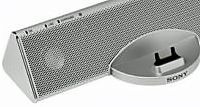 So long as your phone has a FM tuner, it can be activated as soon as you plonk the handset into the cradle, letting the MP001 double up as a home radio system – neat.
So long as your phone has a FM tuner, it can be activated as soon as you plonk the handset into the cradle, letting the MP001 double up as a home radio system – neat.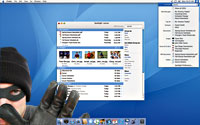 To find out how secure Apple’s OS X operating system is, a Swedish-based Mac fan set up his Mac Mini on the Internet, and invited hackers to try and break through the computer’s security and gain root control.
To find out how secure Apple’s OS X operating system is, a Swedish-based Mac fan set up his Mac Mini on the Internet, and invited hackers to try and break through the computer’s security and gain root control.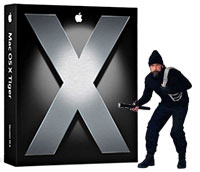 Dave Schroeder of the University of Wisconsin explained that because anyone logging on was allowed to set up a local account on the Swedish machine (accessed via ssh), the exercise was more like breaking into a different user account while sat behind the computer. And that is much easier then hacking into a fully protected system over the Internet.
Dave Schroeder of the University of Wisconsin explained that because anyone logging on was allowed to set up a local account on the Swedish machine (accessed via ssh), the exercise was more like breaking into a different user account while sat behind the computer. And that is much easier then hacking into a fully protected system over the Internet. There may be almost 76 million sites stuffed full of six billion pages of information vying for our attention on the Web, but it seems that most surfers only choose to visit six sites on a regular basis.
There may be almost 76 million sites stuffed full of six billion pages of information vying for our attention on the Web, but it seems that most surfers only choose to visit six sites on a regular basis. Sadly, it seems that the days of random surfing are coming to a close, with the vast majority of Web users (95 per cent) going online with a specific destination in mind.
Sadly, it seems that the days of random surfing are coming to a close, with the vast majority of Web users (95 per cent) going online with a specific destination in mind. Bringing together public services from across eleven Whitehall departments, visitors to Directgov can unearth a mountain of useful information and services, from renewing driving licences, car taxes or passports , locating local services like schools, childminders and recycling and even planning journeys on foot, by car or by public transport.
Bringing together public services from across eleven Whitehall departments, visitors to Directgov can unearth a mountain of useful information and services, from renewing driving licences, car taxes or passports , locating local services like schools, childminders and recycling and even planning journeys on foot, by car or by public transport.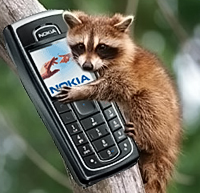 With a bonkers new naming strategy that suggests the creatives may have been on something stronger than caffeine, Orange have launched a new tariff that links customer behaviour with animal characteristics.
With a bonkers new naming strategy that suggests the creatives may have been on something stronger than caffeine, Orange have launched a new tariff that links customer behaviour with animal characteristics. Initially launching to Pay Monthly customers, the animal packages will be made available to Pay as you go customers later in the year.
Initially launching to Pay Monthly customers, the animal packages will be made available to Pay as you go customers later in the year.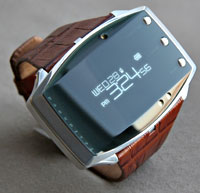 Seiko Instruments has announced their first Bluetooth watch, known as either the BT Watch or the rather less snappy, CPC TR-006 ver.1.0.
Seiko Instruments has announced their first Bluetooth watch, known as either the BT Watch or the rather less snappy, CPC TR-006 ver.1.0.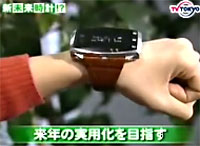 If you get an SMS or email on your phone the watch can alert you, and if your phone’s ringing, you won’t have to rummage about in your bag or pockets to see who is calling – the number will appear on the watch.
If you get an SMS or email on your phone the watch can alert you, and if your phone’s ringing, you won’t have to rummage about in your bag or pockets to see who is calling – the number will appear on the watch.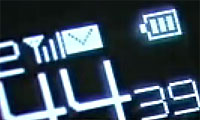 Now, much as we like the idea of cool high tech toys buzzing away on our wrists, we have to say that this watch looks more than a bit silly – it’s so big you may as well strap your mobile onto your wrist and be done with it!
Now, much as we like the idea of cool high tech toys buzzing away on our wrists, we have to say that this watch looks more than a bit silly – it’s so big you may as well strap your mobile onto your wrist and be done with it!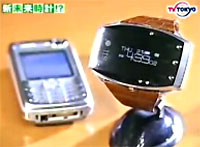 We reckon it would be cool to have text messages, news headlines, RSS feeds, football scores and other short bursts of info appear on your watch – particularly when you’re stuck in a dull meeting.
We reckon it would be cool to have text messages, news headlines, RSS feeds, football scores and other short bursts of info appear on your watch – particularly when you’re stuck in a dull meeting. BT has announced that some of its users should be able to obtain broadband speeds of ‘up to’ 8 Mbps by the end of March.
BT has announced that some of its users should be able to obtain broadband speeds of ‘up to’ 8 Mbps by the end of March. All good news you’d think, but the new connectivity comes with a bag full of caveats related to physical factors, with only those lucky enough to live or work close to their local telephone exchange able to scoop up the maximum 8Mbit/s speed.
All good news you’d think, but the new connectivity comes with a bag full of caveats related to physical factors, with only those lucky enough to live or work close to their local telephone exchange able to scoop up the maximum 8Mbit/s speed.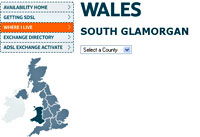 Paul Reynolds, BT’s Wholesale chief executive, was keen to big up his company’s commitment to broadband availability in the UK “Thanks to BT’s continued investment in the broadband network, the UK now boasts the highest level of broadband availability in the G8. We’re now building on those efforts in becoming the first operator in the UK to commit to a national service which is capable of broadband speeds of up to 8Mbit/s.
Paul Reynolds, BT’s Wholesale chief executive, was keen to big up his company’s commitment to broadband availability in the UK “Thanks to BT’s continued investment in the broadband network, the UK now boasts the highest level of broadband availability in the G8. We’re now building on those efforts in becoming the first operator in the UK to commit to a national service which is capable of broadband speeds of up to 8Mbit/s. Those clever Koreans at LG are at it again, releasing the ONE PHONE II, a smart new Bluetooth home/mobile phone and the XNOTE TX, a tiny laptop with a built in DMB module.
Those clever Koreans at LG are at it again, releasing the ONE PHONE II, a smart new Bluetooth home/mobile phone and the XNOTE TX, a tiny laptop with a built in DMB module.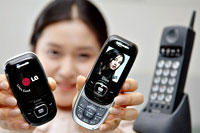 It appears that this phone, however, uses the technology to automatically switch to a landline and not a Wi-Fi home network like the Fusion.
It appears that this phone, however, uses the technology to automatically switch to a landline and not a Wi-Fi home network like the Fusion.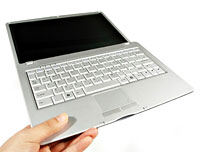 Packed inside its ultra-thin body is 12.1-inch, 1366×768 pixel LCD, a 1.3GHz Intel Pentium-M processor, Geforce Go 7300 graphics, a healthy 60GB disk with support for up to 2GB RAM.
Packed inside its ultra-thin body is 12.1-inch, 1366×768 pixel LCD, a 1.3GHz Intel Pentium-M processor, Geforce Go 7300 graphics, a healthy 60GB disk with support for up to 2GB RAM.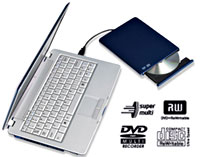 Battery life is quoted around a disappointing 2 hours (up to 8 hours with additional battery), although this plummets down to just 1hr 12 mins if you’re using the attached optical drive.
Battery life is quoted around a disappointing 2 hours (up to 8 hours with additional battery), although this plummets down to just 1hr 12 mins if you’re using the attached optical drive. We have to say we’re mightily impressed with the desirability factor of the so-small-you-want-to-pat-them-on-the-head XNOTEs and it’s great to see LG coming up with design to rival Apple/Sony’s finest.
We have to say we’re mightily impressed with the desirability factor of the so-small-you-want-to-pat-them-on-the-head XNOTEs and it’s great to see LG coming up with design to rival Apple/Sony’s finest. Samsung has announced the world’s first 8GB Hard Disk embedded smartphone, the SGH-i310, which is expected to start shipping in Europe during the second half of this year.
Samsung has announced the world’s first 8GB Hard Disk embedded smartphone, the SGH-i310, which is expected to start shipping in Europe during the second half of this year.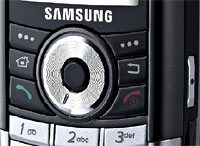 The smartphone seems pretty pocketable too, measuring 111.9 x 48.5 x 19.8 mm and weighing 120g.
The smartphone seems pretty pocketable too, measuring 111.9 x 48.5 x 19.8 mm and weighing 120g. Almost 60 per cent of Britons rely on the Internet to do their banking, according to new research commissioned by the Alliance and Leicester bank.
Almost 60 per cent of Britons rely on the Internet to do their banking, according to new research commissioned by the Alliance and Leicester bank. Designed to cut down on identity theft and online fraud, the two-factor authentication compels users to provides two means of identification.
Designed to cut down on identity theft and online fraud, the two-factor authentication compels users to provides two means of identification. Other banks are also jumping on the security bandwagon, with Barclays running a new chip card reader trial involving 5,000 customers and staff, while Lloyds TSB is close to completing an exhaustive six-month test of a keyring type device.
Other banks are also jumping on the security bandwagon, with Barclays running a new chip card reader trial involving 5,000 customers and staff, while Lloyds TSB is close to completing an exhaustive six-month test of a keyring type device.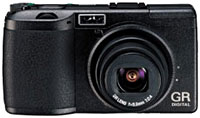 Before you start reading this review, let’s get a few things straight.
Before you start reading this review, let’s get a few things straight. And if you like your cameras to look mean’n’lean with big shiny lenses, all-swivellin’, flip-out LCD screens with hi-tech add-ons like optical image stabilisation and bleeping bells’n’whistles, walk on by.
And if you like your cameras to look mean’n’lean with big shiny lenses, all-swivellin’, flip-out LCD screens with hi-tech add-ons like optical image stabilisation and bleeping bells’n’whistles, walk on by.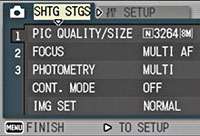 Although this approach may not appeal to the point’n’shoot brigade, for enthusiasts fed up with the endless button pushing and dial spinning that comes with most compact digicams, this camera is a revelation.
Although this approach may not appeal to the point’n’shoot brigade, for enthusiasts fed up with the endless button pushing and dial spinning that comes with most compact digicams, this camera is a revelation.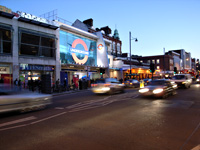 Sadly, there’s no built in optical viewfinder, although the big 2.5″ LCD 210k pixel screen performed well in bright light and can also display a live histogram display.
Sadly, there’s no built in optical viewfinder, although the big 2.5″ LCD 210k pixel screen performed well in bright light and can also display a live histogram display.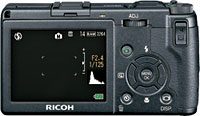 The camera is one of the smallest digital cameras with ultra-wide angle lens, and fits easily in a pocket, measuring 107 x 25 x 58 mm (WxDxH).
The camera is one of the smallest digital cameras with ultra-wide angle lens, and fits easily in a pocket, measuring 107 x 25 x 58 mm (WxDxH). Shooting in RAW and spending a little time in post-processing produced some stunning results, but shooting at low ISO/high quality JPEG should prove fine for most users.
Shooting in RAW and spending a little time in post-processing produced some stunning results, but shooting at low ISO/high quality JPEG should prove fine for most users. Because of its niche appeal, the Ricoh’s a tough camera to unreservedly recommend, but for keen street/landscape photographers looking for a rugged, flexible, high quality camera capable of the very highest results, we’d put the GR Digital right at the very top of the list.
Because of its niche appeal, the Ricoh’s a tough camera to unreservedly recommend, but for keen street/landscape photographers looking for a rugged, flexible, high quality camera capable of the very highest results, we’d put the GR Digital right at the very top of the list.